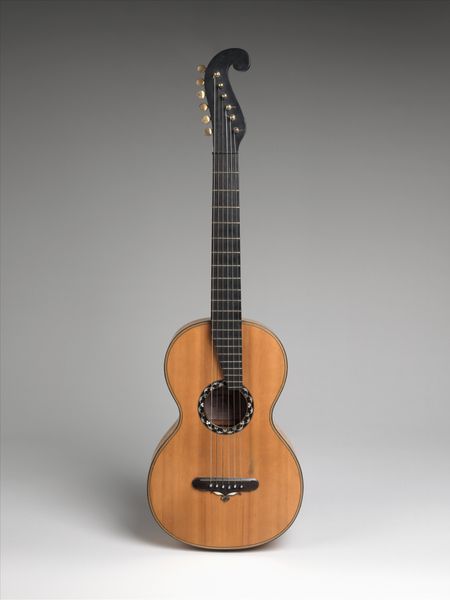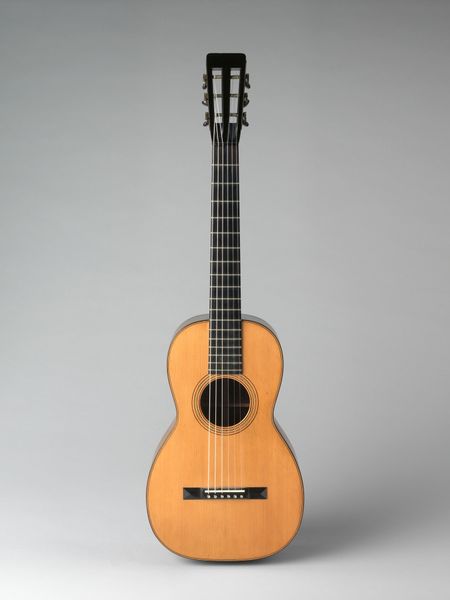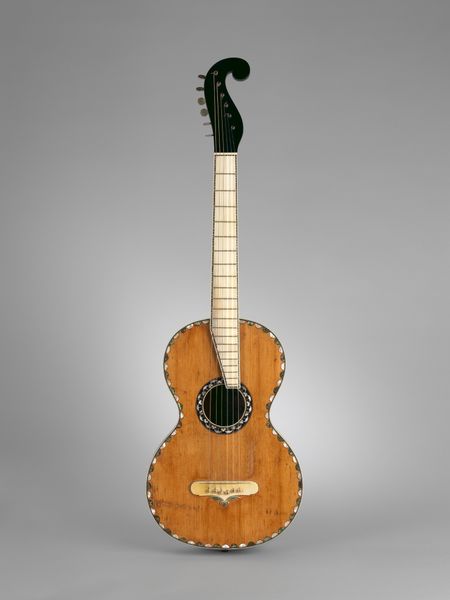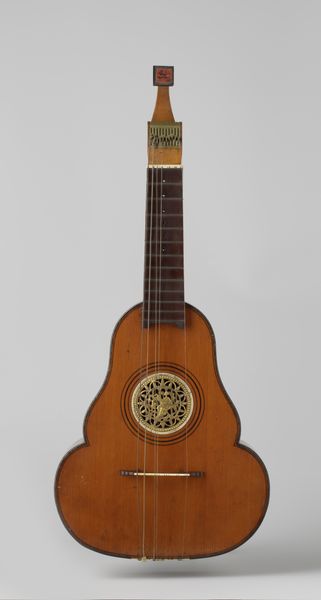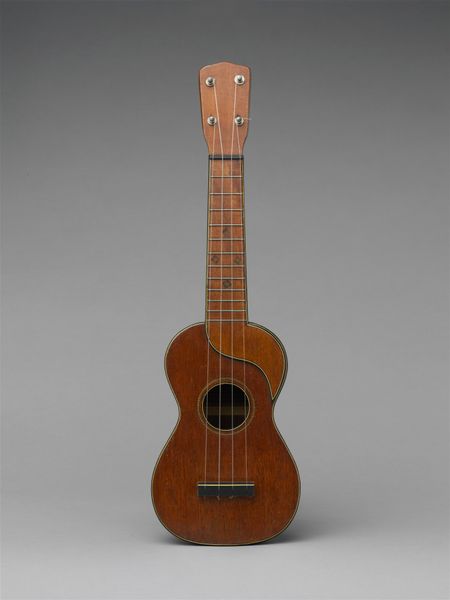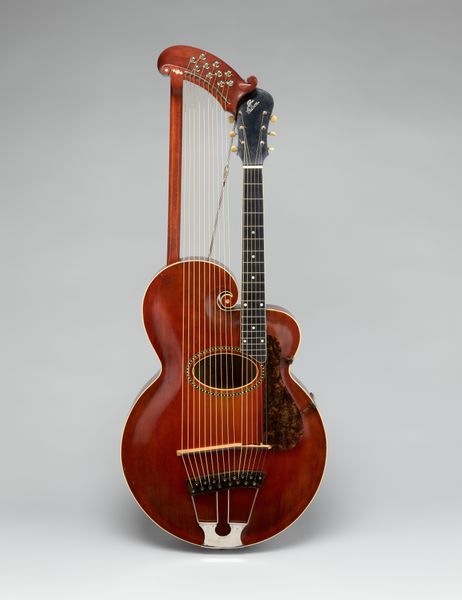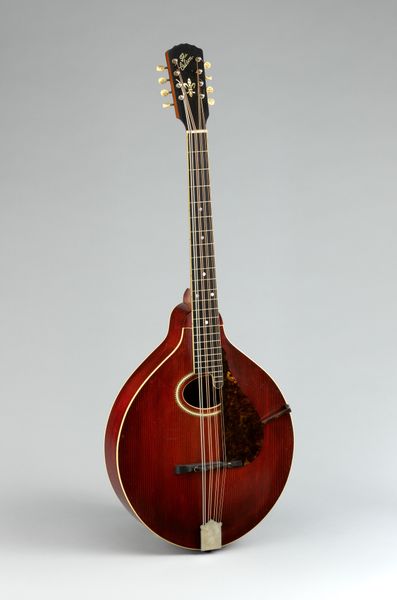
wood
#
wood
#
musical-instrument
Copyright: Public Domain
Editor: Here we have a guitar made by Pedro Fuentes, sometime between 1800 and 1858. It's made of wood, of course, and it's currently housed at the Met. The wood grain is stunning, almost hypnotic. What are your thoughts when you see it? Curator: Well, I think it's important to consider who had access to create and play such an instrument during that period. Was it intended for the wealthy elite, perhaps serenading gatherings with European melodies? Or could it have served other purposes within different social strata? Consider the contexts of labor; Who were the artisans that produced the elaborate carvings, and under what conditions? Editor: That's a great point. I hadn't thought about the socio-economic implications of the guitar itself, only about it as an aesthetic object. Curator: Exactly. Think about the music created and performed with this guitar, then consider that against the background of the 19th century – revolutions, colonialism, industrialization. Music wasn't simply entertainment. It was, and still is, often resistance, commentary, and cultural preservation. The very design could reflect regional styles or even symbolic statements. What kind of narratives might it express, both intended and unintended? Editor: So you're saying, by analyzing the materials, the craftsmanship, and the potential use of this guitar, we can glean insights into the lives and social dynamics of the time? Curator: Precisely. Art objects such as this are documents that echo throughout history and contemporary artmaking practices, carrying untold histories of resistance and creation. We need to think critically about these artifacts, recognizing their potential as tools for interrogating dominant narratives. Editor: That gives me so much more to consider when viewing this guitar. Thanks! Curator: Indeed. Always remember that objects such as this instrument can act as tangible connectors to a complex, layered past.
Comments
No comments
Be the first to comment and join the conversation on the ultimate creative platform.
